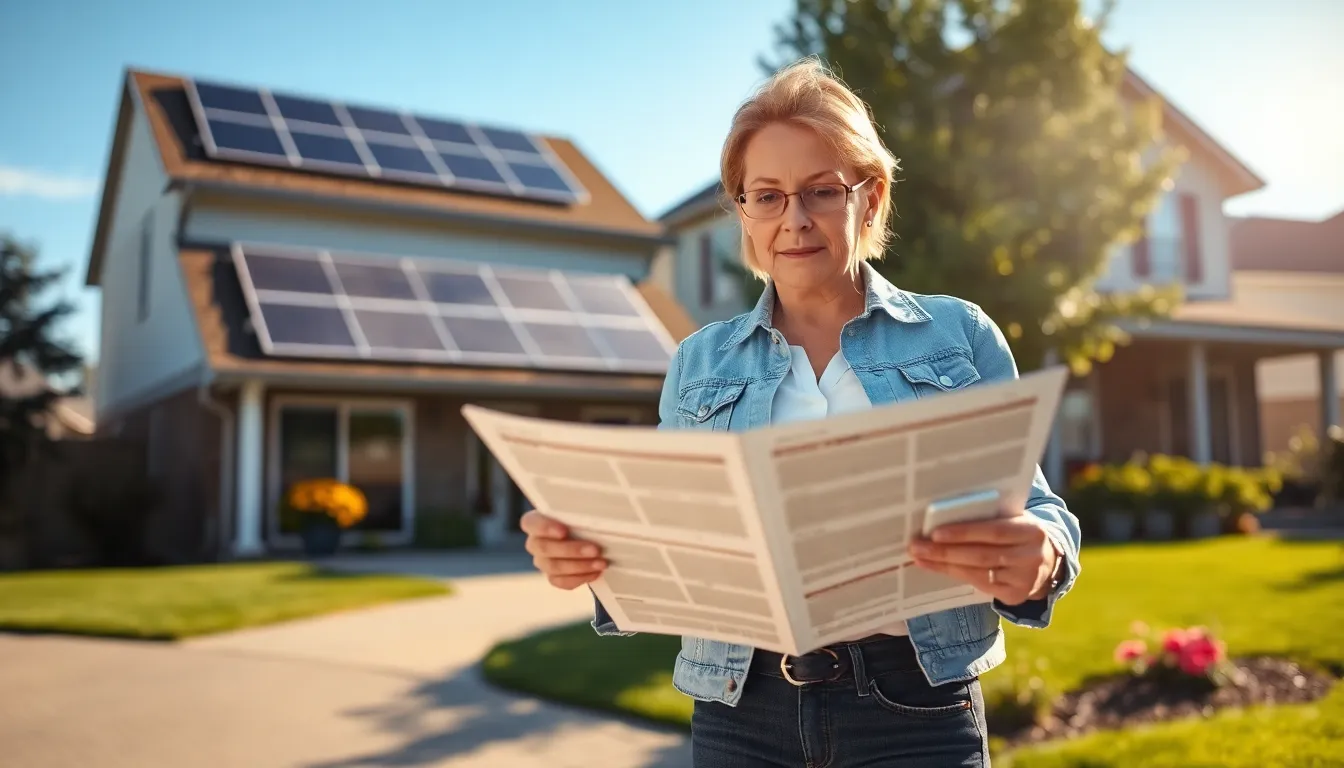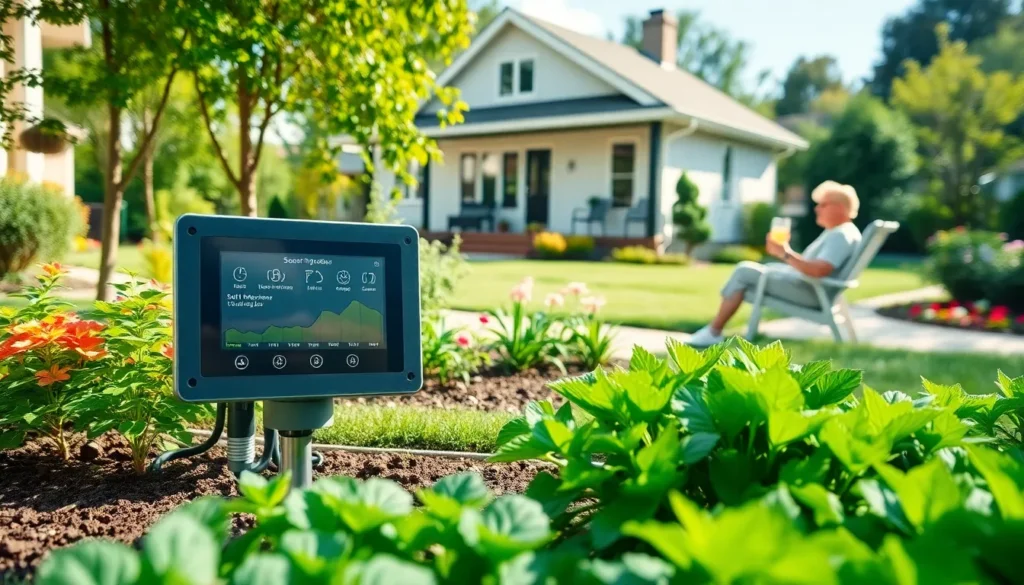Table of Contents
ToggleIn an era where renewable energy is not just a trend but a necessity, solar power has emerged as a viable solution for homeowners looking to reduce their energy costs and carbon footprint. But, transitioning to solar energy can seem daunting, particularly when it comes to financing the installation. This comprehensive guide explores various solar financing options, equipping you with the knowledge needed to make informed decisions. Whether you’re a first-time buyer or looking to upgrade, understanding these financial avenues can help you harness the full potential of solar energy for your home.
Understanding Solar Power Financing Options

Investing in solar energy requires an understanding of the available financing options tailored for homeowners. By knowing these options, individuals can better navigate the complexities of solar installation costs and payment structures.
Types of Solar Financing Available
There are several solar financing options available today, each catering to different financial situations and homeowner preferences. Here are the primary types:
- Solar Loans: Fixed-rate loans can be secured through banks or specialized lenders. Homeowners pay off these loans over time, usually with lower interest rates compared to credit cards.
- Leases: In this arrangement, homeowners lease the solar equipment, paying a fixed monthly fee without taking ownership of the system. This option typically involves no upfront costs and integrates maintenance into the lease agreement.
- Power Purchase Agreements (PPAs): Homeowners agree to purchase the power generated by the solar system at a predetermined rate, usually lower than their local utility costs. The installer retains ownership of the solar panels and is responsible for maintenance and operation.
- Cash Purchase: For those who can afford it, paying for a solar system outright eliminates long-term debt. It often allows homeowners to take full advantage of tax incentives, rebates, and immediate energy savings.
Benefits of Financing Your Solar Installation
Financing your solar installation can provide various benefits beyond just immediate access to renewable energy. Some advantages include:
- Lower Monthly Payments: Options like leases and loans enable homeowners to spread the cost over time, making solar more affordable than an upfront purchase.
- Increased Home Value: Homes with solar installations often sell at a premium, contributing to long-term investment returns.
- Access to Incentives: Many states offer various incentives for solar adoption, such as tax credits, which can significantly reduce the overall cost, especially for financed installations.
Choosing the Right Financing Option for Your Home
Deciding on the best financing option for a solar installation requires careful consideration of one’s financial situation and long-term goals.
Evaluating Your Financial Situation
Before diving into financing, homeowners should first evaluate their financial health. Key points to consider include:
- Credit Score: A higher credit score can unlock better interest rates on loans, potentially making borrowing cheaper.
- Income Stability: Consistent income, whether through employment or other sources, will affect the ability to meet ongoing payment obligations.
- Home Equity: Homeowners with substantial equity may find it easier to secure favorable loan terms through home equity lines of credit (HELOCs).
Long-Term vs. Short-Term Financing
Homeowners must determine whether they prefer short-term or long-term financing.
- Short-Term Financing: Often features lower interest rates but requires quicker repayment, resulting in higher monthly payments. This option can save on interest over time.
- Long-Term Financing: While spreading out payments can reduce monthly costs, it often leads to paying more in interest over the loan’s life. It’s crucial to balance immediate financial capability with long-term affordability.
Tips for Securing Solar Financing
Once homeowners have assessed their options and decided on a preferred financing method, the next step is navigating the financing process effectively.
Researching Lenders and Loan Options
Choosing the right lender is crucial to securing favorable financing. Homeowners should:
- Compare Rates: Look at multiple lenders and their rates, paying attention to not just the interest but also fees and terms.
- Read Reviews: Customer experiences can provide insights into a lender’s reliability and customer service.
- Check for Special Programs: Some lenders may offer programs specifically designed for solar financing that provide competitive rates or additional benefits.
Preparing Your Application for Success
To enhance the chances of loan approval, homeowners should be prepared:
- Organize Financial Documents: Compile income statements, tax returns, and details about any existing debt to demonstrate financial health.
- Present a Solid Business Case: Clearly articulate how solar installation will benefit both financially and environmentally, showcasing potential savings.
Maximizing Your Return on Investment
Investing in solar power is more than just a financial decision: it’s a long-term strategy that can significantly reduce energy costs and generate savings.
Understanding Solar Incentives and Rebates
Homeowners should take advantage of state and federal incentives to maximize returns. Common incentives include:
- Federal Investment Tax Credit (ITC): Currently, this program allows homeowners to deduct 26% of the installation cost from their federal taxes, significantly reducing upfront costs.
- State Rebates: Many states offer cash rebates for solar installations, providing instant savings and increasing ROI.
- Net Metering: This allows homeowners to sell excess electricity back to the grid, providing further financial benefits on energy bills.
Calculating Potential Savings
To assess long-term savings from solar investment, homeowners should:
- Estimate Energy Bill Reduction: Calculate potential savings based on current electricity costs.
- Consider Increasing Energy Prices: With traditional energy prices likely to rise, locking in solar energy can provide protection against future hikes.
- Evaluate Equipment Lifespan: Most solar panels have a lifespan of 25 years or more, often leading to decades of energy savings.
Conclusion
Financing a solar installation may initially seem overwhelming, but understanding the variety of options available simplifies the process. Whether through loans, leases, or cash payment strategies, homeowners can find financing that fits their financial situation and long-term goals. With the right knowledge and preparation, adopting solar energy not only makes sense environmentally but also financially, paving the way for sustainable savings and improved home value.







